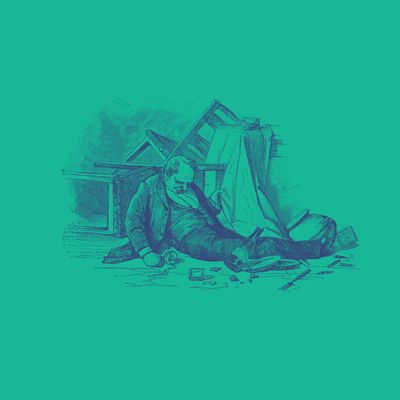
For all the hype about the hectic pace of modern life, our weekends look downright sluggish compared to those of our forebears: We have a leisurely 48 hours to fill; they had just half that time. We can plan our fun strategically, reserving Saturdays for debauchery and Sundays for recovery; in the old days, they had to squeeze it all into a single day.
And squeeze they did. The structure of the workweek as we know it — five days on, two days off — came together in bits and pieces, shaped over time by religious customs, labor practices, and cultural ideas about leisure. It’s a long, complicated history, but a recent video on the Discovery website Seeker offers an especially delightful nugget: During the Industrial Revolution, the two-day weekend took root in England as a way to deal with hung-over employees.
“In the 19th century, the Britons started using Sabbath days for enjoyment instead of religion,” explained host Trace Dominguez. And enjoyment, of course, included drinking — meaning that come Monday morning, workers would stagger in late, sluggish, and bleary-eyed. Or, in some cases, just stay home. The problem became so widespread that it gave rise to a custom known as “Saint Monday”: skipping work on Mondays to recover from the previous day’s festivities. In the 19th century, Dominguez said, factory owners began striking deals with their employees: We’ll give you a half-day on Saturday (a workday at the time) if you please, please promise to show up on Monday.
The tradeoff held broad appeal for social reasons, too. As a 1991 Atlantic article explained, there were plenty of groups invested in the death of Saint Mondays:
Religious groups campaigned against the tradition, which they saw as linked to the drinking and dissipation that, in their eyes, dishonored the Sabbath. They were joined by middle-class social reformers and by proponents of rational recreation, who also had an interest in altering Sunday behavior. By the end of the century many shops and factories had begun closing on Saturday afternoons, leaving a half-holiday for household chores and social activitiesan evening at the dance hall or the pub and permitting Sunday to be used exclusively for prayer and sober recreations… Half Saturdays and shorter workdays became the pattern followed by all later labor negotiations, and by legislation governing the length of the workday.
And thus, the norm went from one day off to a day and a half, and then eventually to two. These days, it’s easy to imagine the weekend warriors of yore would think we’ve gotten soft: Time was, they had to ride out those workday hangovers without the convenience of Seamless. They couldn’t drag themselves around the corner to order a bacon, egg, and cheese in the morning. Always remember: You live in magnificent times. Now go forth and enjoy the weekend — work will be waiting for you bright and early Monday morning, same as always.




